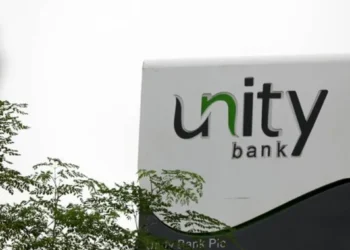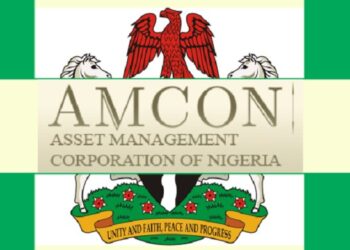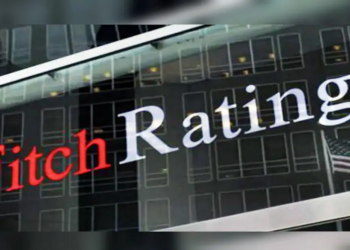Just like has been rumoured since the start of the current economic crisis, rating agency, Fitch has hinted that Nigeria is planning an AMCON 2.0 to once again clean up non performing loans from Nigerian banks. AMCON was set up by the Sanusi Lamido Sanusi led CBN in 2010 to clean up bad loans from commercial banks in the banking crisis of 2009.
According to a press release from Fitch (which quoted press reports) “Central Bank of Nigeria and Nigeria Deposit Insurance Corporation have set up a committee to discuss the plan”.
Critics of AMCON believe the vehicle is another bastion of corruption which was used to bail out crooked billionaires who never had any intention of paying back trillions in loans borrowed from commercial banks. To avoid a collapse of the financial sector, the CBN has had to pump in almost N4 trillion into AMCON either through bond purchases or bailouts masked as overdrafts.
AMCON reported a loss after tax of about N304 billion in the financial year ended December 2015 and has been loss making since inception. It currently has cumulative losses of about N4.5 trillion and has a negative equity of N3.78 trillion (as at 2015). The corporation is technically bankrupt and is barely surviving because of the CBN. In fact, critics believe it may never recover up to half of its current losses.
Supporters however believe where it not for AMCON, the financial sector may have collapsed which would have threatened the Nigerian economy and political stability. It was also hailed at the time by foreign investors. Supporters of AMCON and proponents of AMCON 2.0 believe that just like the former, a bailout was due as the increasing in non performing loans facing Nigerian banks was due to the fall in oil prices unlike in 2009/2010 when banks blew billions in loans to the capital market.
Fitch’s latest opinion appears to support AMCON 2.0, fanning suspicion of foreign pressure to bail out the financial sector before foreign investors may return into Nigeria. Fitch claims AMCON has “recovered 56% of the value of total loans acquired from the banks”. This appears to misrepresent claims by the Managing Director/Chief Executive Officer, AMCON, Mr. Ahmed Kuru, who disclosed earlier in the year when the result was released that ” 56 per cent of its debtors had approached the corporation for settlement.” He further explained settlement to mean “individuals that had entered into agreement with AMCON on their repayment plan.”
Scroll down to read Fitch Press release
Fitch Ratings-London-13 December 2016: Efforts to establish a specialised company to acquire Nigerian banks’ non-performing loans (NPLs) will, if successful, ease mounting asset-quality problems, says Fitch Ratings. Press reports suggest the Central Bank of Nigeria and Nigeria Deposit Insurance Corporation have set up a committee to discuss the plan.
NPLs in the sector are increasing rapidly, reaching 11.7% of gross loans at end-June 2016 from 5.3% at end-2015. The operating environment for banks is becoming increasingly difficult as recession, weak oil prices and exchange rate pressure combine to make it more difficult for borrowers to service their loans.
The Nigerian authorities have allowed banks to speed up the write-off of fully reserved NPLs since July 2016. This is intended to encourage banks to clean up their balance sheets and help them comply with the 5% NPL/total loans ratio the central bank uses as guidance for the banks. The write-off measures have little impact on our assessment of a bank’s asset quality because we take a view on the adequacy of a bank’s loan loss reserves and consider its NPLs less loan loss reserves in our assessment of loan quality. Fitch-rated Nigerian banks’ NPLs at end-June 2016 were reserved at 62% and our ratings already factor in an assessment of loan loss cover adequacy.
Setting up an asset management company (AMCON2) to acquire NPLs would in our view be a more significant and credit-positive measure. If successful, and depending on transfer pricing agreed, it could result in real improvement in the banking sector’s asset quality. Sectors experiencing difficulties include oil and gas, utilities, manufacturing and trading.
AMCON2 would follow AMCON, established in 2010. This company, funded by the issuance of federal government zero-coupon bonds, the central bank, and later by a levy on banks’ assets, removed NPLs from the banking sector, making banks better positioned to lend to the real economy. AMCON continues to operate, having recovered 56% of the value of total loans acquired from the banks. It also acquired failed banks and stakes in failed banks.
Funding of AMCON2 might prove difficult. Press reports suggest that the government intends it should be funded by the private sector, but convincing private investors to acquire NPLs at a time of heightened economic difficulty might prove challenging.


















I’m surprised at Fitch’s suggestion to set up a new organisation. I’d recommend building the capacity of AMCON to take on these additional tasks- less money, less hassle given the strain in government revenue.